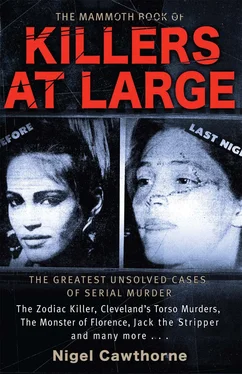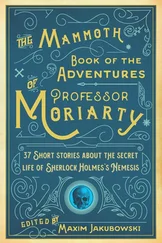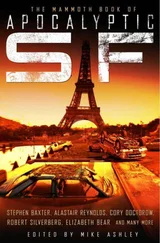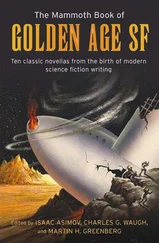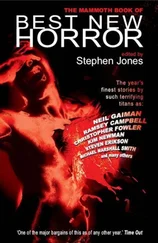However a team of three profilers from the FBI’s National Center for the Analysis of Violent Crime in Quantico, Virginia, spent a week reviewing the cases and concluded that “the majority of the cases were single homicides… It is premature and irresponsible to state that a serial killer is loose in Juarez.”
The first quarter of 1999 began with eight more victims. Then while Sharif went on trial for the rape and murder of Elizabeth Castro Garcia in March 1999, another suspect emerged. Before dawn on 18 March a 14-year-old girl named Nancy arrived at a ranch on the outskirts of Ciudad Juarez. Sobbing and covered with blood, she said she had been raped, strangled and left for dead. Miraculously she survived. The attacker, she said, was the bus driver who had picked her up when she left work at the maquiladora at 1 a.m. When he had dropped off all the other passengers, he drove out into the desert and stopped, claiming the bus had mechanical problems. Then he grabbed her by the neck and asked her if she had ever had sex. The last thing she remembered before she lost consciousness was him telling her that he was going to kill her.
The bus driver’s name was Jesus Guardado Marquez, aka El Dracula . A check of the records revealed that 26-year-old Guardado had a previous conviction for sexual assault. But by the time police went to arrest him, he had fled with his wife. Guardado was arrested a few days later in Durango, some 550 miles to the south. He claimed that he was beaten by the police when he was returned to Ciudad Juarez. However, the police said that Guardado confessed to a number of the murders and named four accomplices who were also maquiladora bus drivers—Victor Moreno Rivera ( El Narco ), Bernardo Hernando Fernandez ( El Samber ), Augustin Toribio Castillo ( El Kiani ) and Jose Gaspar Cerballos Chavez ( El Gaspy ). Together they were called Los Choferes —“The Chauffeurs”. More sinisterly, they are also known as Los Toltecas —“The Toltecs”—who were the blood-thirsty forerunners of the murderous Aztecs. Moreno was the leader of the gang, the police said, and he too was in the pay of Sharif.
They were charged with 20 murders, but protested their innocence. The only evidence against them was their own confession which had been extracted by torture. Sharif denied having any contact with the Chauffeurs and maintained he knew nothing of any conspiracy.
Again, the arrest of Los Choferes did nothing to stem the murders. By May 1999 it was reported that “nearly 200 women” had been murdered since 1993—a substantial leap from October 1998’s figure of 117.
Celebrated profiler Robert Ressler, who heads the Virginia-based corporation Forensic Behavioural Sciences, visited Juarez at the invitation of the authorities and concluded that his former employer, the FBI, were wrong. He found that 76 of the murders fitted into a pattern. The victims were all women aged between 17 and 24. Most of them had been raped and strangled, and more than a dozen had been killed on their way to, or on the way home from, work at a maquiladora . But he concluded that the killings were not the work of a lone serial killer.
“I think it’s probably two or three,” he said. One of them, he thought, was an American coming across the border to take advantage of the situation in Juarez. The police had already demonstrated their inability to catch one killer. There were plenty of dark streets and abandoned buildings, and with a transient population of young women there were plenty of victims to choose from.
“It’s an ideal situation for an American with money,” said Ressler.
The founder of the Citizens’ Committee Against Violence Astrid Gonzales Davila said: “The failure to solve these killings is turning the city into a Mecca for homicidal maniacs.”
Candice Skrapec, the Canadian-born professor of criminology at California State University in Fresno, also identified 67 cases where she thought serial killers were involved. She told the Toronto Star she believed that three or four killers were at large in the 182 post-1993 cases she had studied and “there may be even more murders that could be tied to the three suspected serial killers, and that they were operating in 1992”.
Skrapec believed that “Railway Killer” Angel Maturino Resendez, was one of the perpetrators as he had lived in the barrios there and much of this family—including his uncle, Rafael Resendez-Ramirez, whose name he used as one of many aliases—still live in Juarez. On 13 July 1999, at the urging of his brother and his sister, Resendez crossed the Ysleta Bridge over the Rio Grande into the United States and surrendered to the Texas Rangers after a six-week televised manhunt that made him the most wanted man in America. The US authorities had held back on charging Resendez, fearing the Mexican government would prevent the suspect’s extradition if he was liable to face the death penalty—in Texas he would receive death by lethal injection. But a $125,000-reward had been offered for his capture and his family feared that he might be shot by a bounty hunter. Instead, they brokered his surrender and claimed the reward themselves.
Resendez was charged with nine counts of murder. The first was the murder of a 21-year-old college student who was bludgeoned to death while walking with his girlfriend along a railway line in Kentucky on 29 August 1997. After that eight more bodies were found in victims’ homes along a railroad track from Texas to Illinois as he travelled from state to state. His last two victims were a 51-year-old woman and her 79-year-old father who were found dead in their home near the line in Gorham, Illinois, on 15 June 1999.
Although Resendez could be a suspect in at least some of the Juarez killings, it is unlikely that he was responsible for the majority of the unsolved cases. Indeed, they continued after his arrest.
In December 1999, a mass grave was found outside Ciudad Juarez. It contained nine corpses—three belonging to three US citizens. This invited renewed attention across the border with some, again, suspecting the involvement of the Mexican police. The Dallas Morning News wrote: “Still a mystery is what happened to nearly 200 people, including 22 US citizens who, in many cases, vanished after being detained by men with Mexican police uniforms or credentials.”
These missing persons became known as Los Desaparecidos —“The Disappeared”. Some were thought to be victims of Juarez’s drug wars. But the Association of Relatives and Friends of Disappeared Persons in El Paso believe they may have been kidnapped by the police.
Maquilladoras still went missing and on 6 November 2001 a mass grave containing the skeletal remains of eight women were found in employ plot just 300 yards from the headquarters of the Association of Maquiladoras, the organization that represents most of Juarez’s US-owned export assembly plants. Police then announced creation of a new task force to investigate the murders and a $21,500 reward for the capture of those responsible.
Three days after the grave had been opened bus drivers Gustavo Gonzalez Meza, La Foca , and Javier Garcia Uribe, El Cerillo , both 28, were charged with killing the eight women. The prosecutor claimed they “belonged to a gang whose members are serving time for at least 20 of the rape-murders”. The victims were identified as 15-year-old Esmerelda Herrera, 17-year-old Laura Ramos, 17-year-old Mayra Reyes, 19-year-old Maria Acosta, 19-year-old Veronica Martinez, 20-year-old Barbara Martinez (no relation to Veronica), 20-year-old Claudia Gonzales and 20-year-old Guadalupe Luna.
The suspects claimed that their statements were extracted under torture. Their lawyers received death threats. On 5 February 2002, one of them was killed by police after a high-speed chase. The police claimed they “mistook him for a fugitive” and a judge ruled that the shooting was “self-defence”. Meanwhile it was revealed that DNA tests had failed to confirm the police’s early identifications of the victims. New DNA tests apparently confirmed the identification of Veronica Martinez, though it threw no light on the other seven cases. Then Gonzalez died in jail, ostensibly from complications arising after surgery.
Читать дальше
